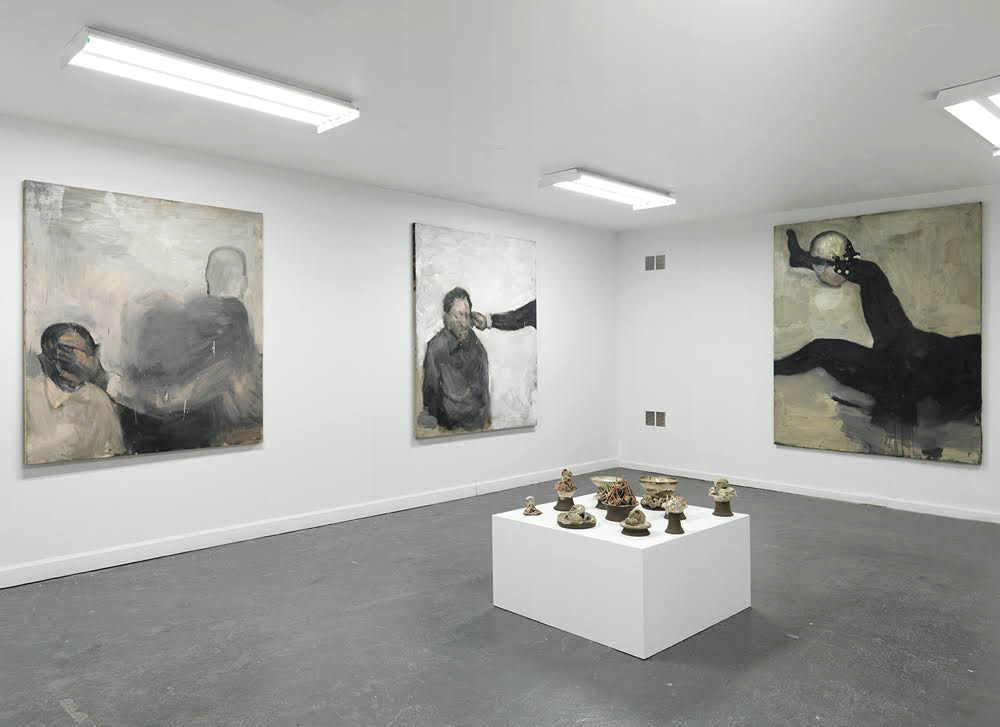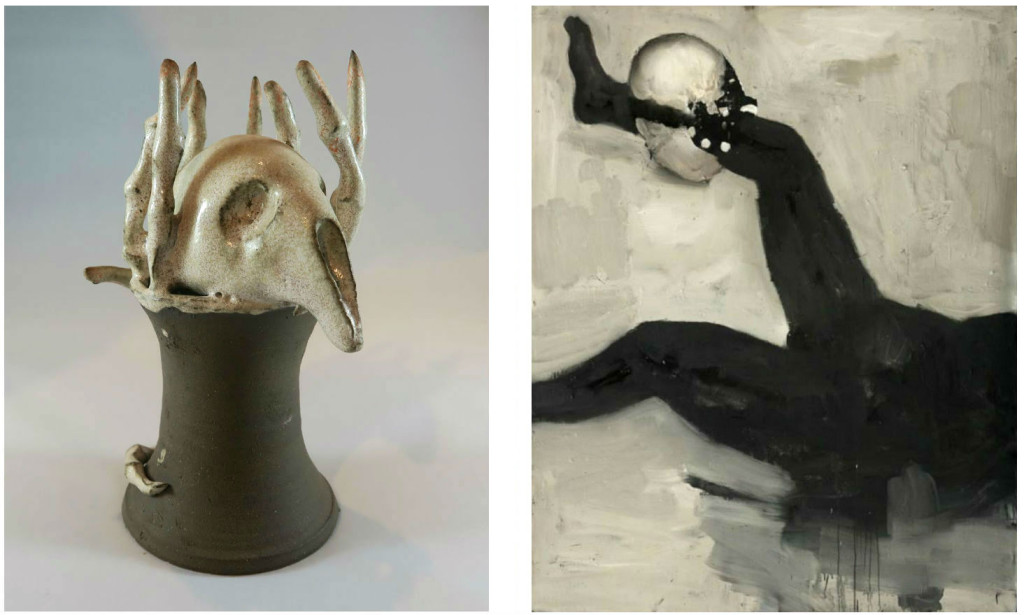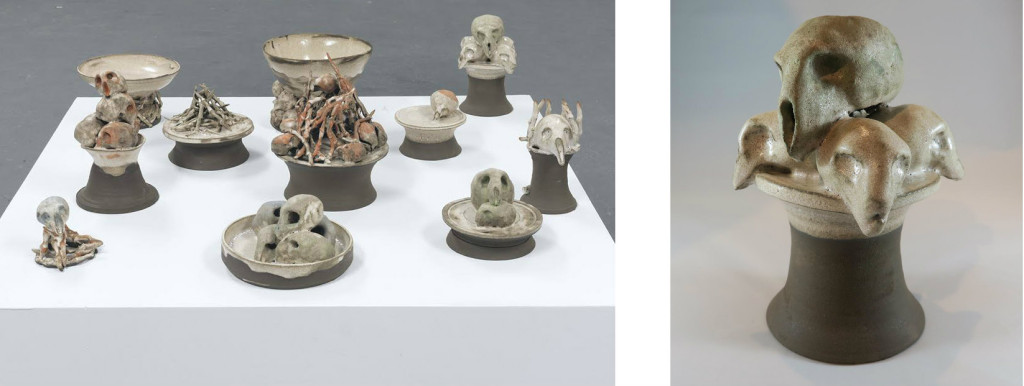
“Danse Macabre” Installation view at Louis B. James, New York, Image courtesy of the gallery
An exhibition that was on view in the lower level of Louis B. James gallery until March 20th titled Danse Macabre, featured ceramic sculptures by Monte Coleman, who is well known in New York’s interior design circles for his craftsmanship in working with textiles, and paintings by Michele Bubacco, a painter based between Italy and Vienna, that reflected the theme of the late-medieval allegory “Dance of Death,” or more commonly known in French: “Danse Macabre.” Neither artist is represented by the gallery, but held an artist talk together at David Richard Gallery in Santa Fe, where they have shown their works in separate exhibitions. The theme is manifested by the classic symbol of a skull, present in many of Coleman’s ceramic sculptures, installed on a small, square platform. The sculptures can be related directly to Bubacco’s painting “The Bite,” (2014) in which a skull is biting the leg of person lying horizontally, cropped below the waist. All five of Bubacco’s paintings in the room are treated with fearless, yet deliberate strokes. On the other hand, many of Coleman’s ceramic skulls incorporated a playful element both through their exaggerated facial expressions and through the variety of shapes, textures and placement.

Monte Coleman (Left): “1329 Skull with fingers in base,” (2015) Glazed stone ware. Michele Bubacco (Right): “Bite,” (2014) Oil on canvas, Image courtesy of the gallery
Today, the subject of death symbolized by a skull may seem obvious, but presents an interesting conversation. It is fair to say that in art history, dating back but not limited to, Hans Holbein’s anamorphically rendered skull in the foreground of “The Ambassadors” (1533) until Damien Hirst’s more recent incorporation of the skull both in his paintings and sculptures, these representations inevitably have been overused. This is especially true in contemporary art since there are more and more layers of connotation added to this object as time goes on, therefore, diluting the skull from what used to be a symbol of death and its inevitability, to simply- an object. We see this dilution in a series of Hirst’s paintings made by spinning the canvas while pouring paint on top. Incorporated among some of these abstract works are images of butterflies, skulls, and hearts, all commonly employed symbols by Hirst. In the case of his “spin paintings,” one could say that skulls are not used to symbolize death, but rather as a design element to make his them more visually appealing. The incorporation of a skull has indeed become too obvious due to this dilution process, therefore, become harder and harder to incorporate in an original manner.

Monte Coleman: Installation view (Left) of Glazed stone ware sculptures (2015) and detail view (Right) of “1337 5 skulls on pedestal” (2015), Image courtesy of the gallery
With all this said, the works featured in this exhibition explored the topic of death in a different way than the late-medieval allegory did. The original allegory of “Dance of Death” explores the universality of death no matter one’s position or wealth in life, instilling a fear. On the other hand, Bubacco’s paintings are compositionally inclusive, inviting the viewers’ curiosity by only showing a fragment of a gesture or an event. The same instinct is triggered through some of the empty bowls in Coleman’s sculptures. It is reminiscent of not being able to stop tonguing the sore at the roof of one’s mouth, or the inability to stop oneself from whiffing at something foul over and over again. Through the use of a skull, Danse Macabre offered a contemporary analysis of the allegory by conversing at an art historical level, all while exploring the subject in our present time.

Michele Bubacco (Left): “Sonata per dodici gamba da camera,” (2014) Oil on canvas. Monte Coleman (Right): “Sonata per dodici gamba da camera,” (2014) Oil on canvas, Image courtesy of the gallery
Danse Macabre, curated by Howard Rutkowski and Mary Dinaburg was on view at Louis B. James gallery from February 7th until March 20th, 2016.
